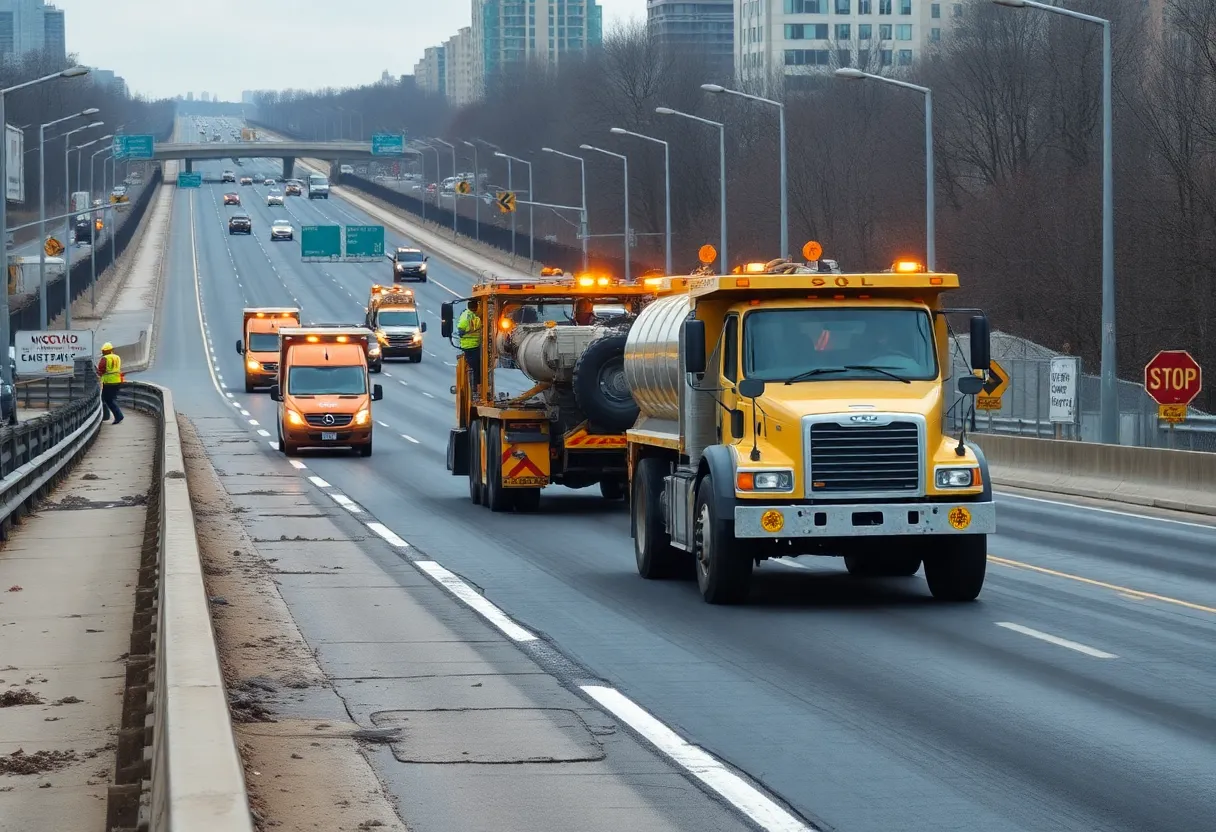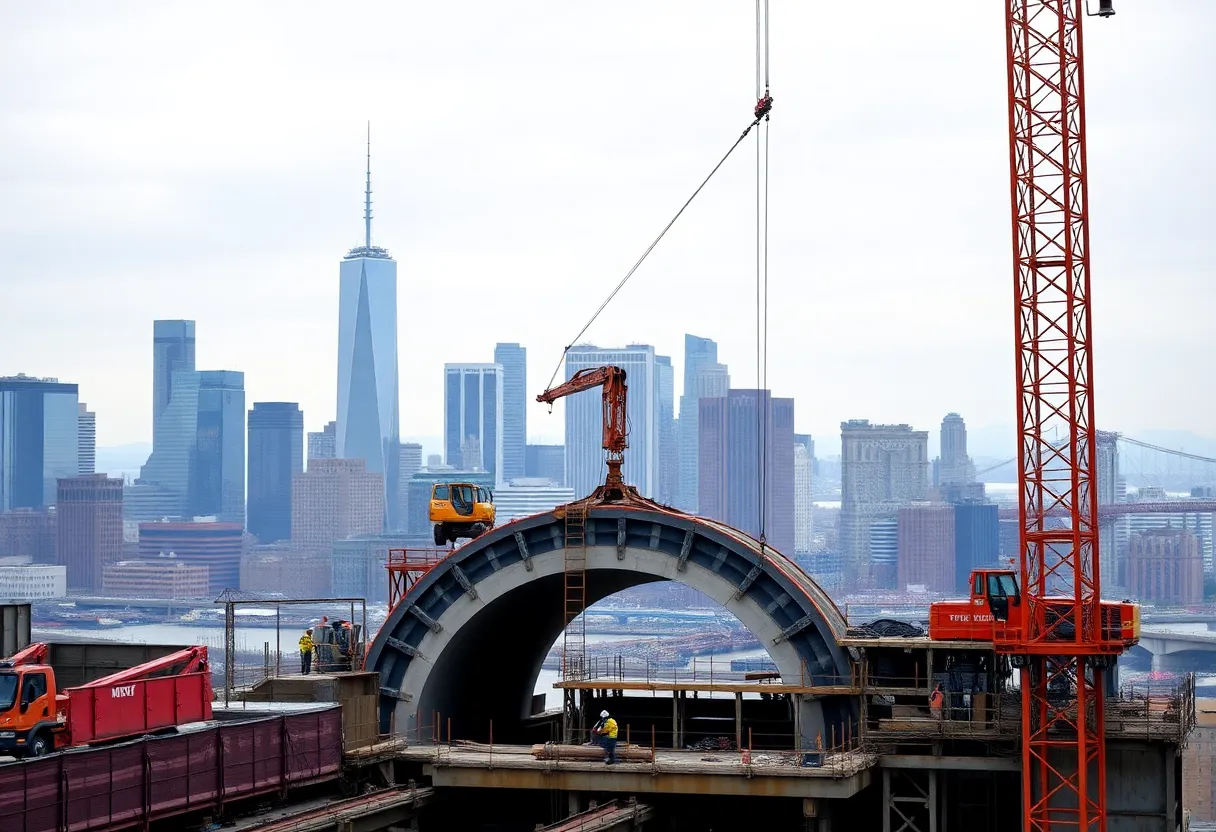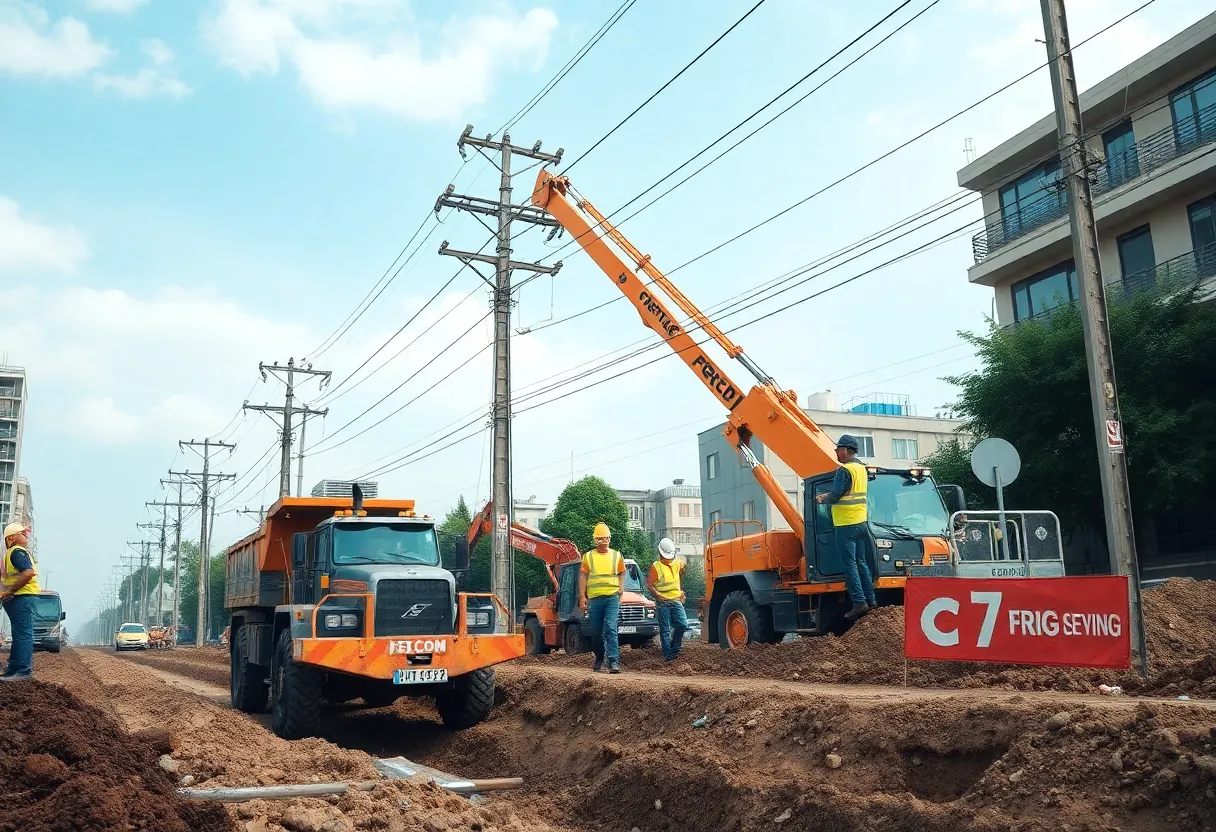News Summary
The U.S. construction industry is experiencing a notable slowdown due to economic uncertainty. Data indicates a decrease in construction activity affecting both consumers and producers. Although non-residential construction has seen some growth, overall project starts declined significantly. High inflation, tariffs, and labor shortages pose additional challenges. Looking forward, fluctuating material prices and increased tariffs threaten further cost increases, impacting both residential and non-residential construction. The industry must navigate these hurdles while seeking opportunities through federal funding and technological innovations.
U.S. Construction Industry Faces Slowdown Amid Economic Uncertainty in Early 2025
The U.S. construction industry is experiencing a notable slowdown, significantly impacted by ongoing economic uncertainty in the first half of 2025. Recent reports indicate that construction activity has significantly slowed down, with numerous challenges affecting both consumers and producers alike.
According to data from the Dodge Construction Network, project planning has continued, but timelines are stretching longer, reflecting the broader economic concerns. The overall economy is characterized by high inflation, which is weakening demand and putting downward pressure on prices across the board. Tariff-driven cost increases further complicate the situation, making it difficult for both construction firms and consumers to manage expenses.
Key Trends in Non-Residential Construction
Year-to-date, non-residential construction starts have decreased by 10% during the first four months of 2025. The commercial and manufacturing sectors are at the forefront of this decline, with projections suggesting an ongoing softening due to economic uncertainty. Notably, retail construction starts fell by 5%, while the hotel sector experienced a significant drop of 19%, and warehouse projects were down 9%.
Despite these declines, there are sectors showing growth. The health care, parking garage, and office building sectors gained traction, particularly due to the rise of data centers. Office buildings have realized the highest growth, with starts up by 19% year-to-date. In April alone, several significant non-residential projects launched, such as:
- A $1 billion Kaiser Permanente Medical Center in Sacramento, CA.
- A $940 million Bally’s River West Hotel and Casino in Chicago.
- Mid-$800 million projects for GM and Samsung SDI battery cell factory in New Carlisle, IN.
Residential Construction Update
On the residential side, there has been a 5% decrease in construction starts through April 2025, with single-family housing starts down by 6% and multifamily starts down by 4%. Key issues driving this trend include housing affordability and a lack of entry-level home supply. Major multifamily initiatives started in April include:
- A $331 million residential-retail development in Jersey City, NJ.
- A $256 million Vista Point apartment building in Groton, CT.
- A $226 million Rambler Riverfront District apartment building in West Lafayette, IN.
Nonbuilding Construction Sees Encouraging Growth
In contrast, nonbuilding construction starts rose by 8% this year, bolstered by funding from federal infrastructure laws. Significant projects initiated in April include:
- A $1.8 billion Hudson Tunnel rail project between New Jersey and New York City.
- A $775 million West Alabama highway project in Thomasville, AL.
- A $365 million, 200-MW Carpenter Wind farm in Carpenter Township, IN.
Future Challenges and Cost Predictions
Looking ahead, potential impacts from fluctuating material prices remain a concern for ongoing projects. Though spot prices have fallen from their recent highs, trade barriers and the prospect of increased tariffs may cause prices to rise again in the latter half of the year. Predictions suggest that the U.S. Commerce Department could impose tariffs between 10% and 25% on lumber imports.
S&P Global Market Intelligence forecasts a 13.9% increase in construction costs in 2025, along with an additional 6.7% rise in 2026. While plywood prices are expected to see a modest increase of 1.5% in 2025, steel prices are projected to remain flat. Notably, construction costs remain an alarming 40% higher than pre-pandemic levels from February 2020.
Labor Shortages and Profit Margins
Furthermore, ongoing labor shortages threaten to impede construction momentum, with many contractors bracing for shrinking profit margins in the months that follow. Despite these hurdles, the U.S. construction sector displays relative resilience compared to other global markets, with project starts up by 6% through eight months of 2025.
As costs and economic uncertainties linger, the influence of federal funding and technological innovations promises to play a vital role in maintaining momentum in the construction industry, particularly for U.S. contractors who have been at the forefront of incorporating new technologies.
Deeper Dive: News & Info About This Topic
Construction NY Resources
TikTok Influencer Arrested on Forgery Charges in South Carolina
Risks and Best Practices for AI Use in Construction
Oregon Enacts SB 426 to Address Wage Theft in Construction
Central Ohio’s Data Center Expansion Sparks Economic Debate
Seven Hydrogen Hubs Urge Senate to Maintain Tax Credits
Canada Records Unprecedented Surge in Nonresidential Construction
ACCNJ Awards $75K in Scholarships Amid Membership Growth
Trends in Construction Project Management Software
Hyphen Solutions Showcases Innovative Data Platform at PCBC
Growth in Fastener Industry Sparks Expansion at S&P Software Consulting
Additional Resources
- Construction Dive: U.S. Construction Industry Overview
- TD Economics: Provincial Economic Forecast
- U.S. News: New Construction Amid Uncertainty
- ConstructConnect: Tariffs and Construction Outlook
- Reuters: U.S. Weekly Jobless Claims
- Wikipedia: Construction Industry
- Google Search: Construction Economic Trends
- Encyclopedia Britannica: Construction
- Google Scholar: U.S. Construction 2025
- Google News: Construction Industry News
Author: Construction NY News
The NEW YORK STAFF WRITER represents the experienced team at constructionnynews.com, your go-to source for actionable local news and information in New York and beyond. Specializing in "news you can use," we cover essential topics like product reviews for personal and business needs, local business directories, politics, real estate trends, neighborhood insights, and state news affecting the area—with deep expertise drawn from years of dedicated reporting and strong community input, including local press releases and business updates. We deliver top reporting on high-value events such as the New York Build Expo, infrastructure breakthroughs, and cutting-edge construction technology showcases. Our coverage extends to key organizations like the Associated General Contractors of New York State and the Building Trades Employers' Association, plus leading businesses in construction and real estate that power the local economy such as Turner Construction Company and CMiC Global. As part of the broader network, including constructioncanews.com, constructiontxnews.com, and constructionflnews.com, we provide comprehensive, credible insights into the dynamic construction landscape across multiple states.





